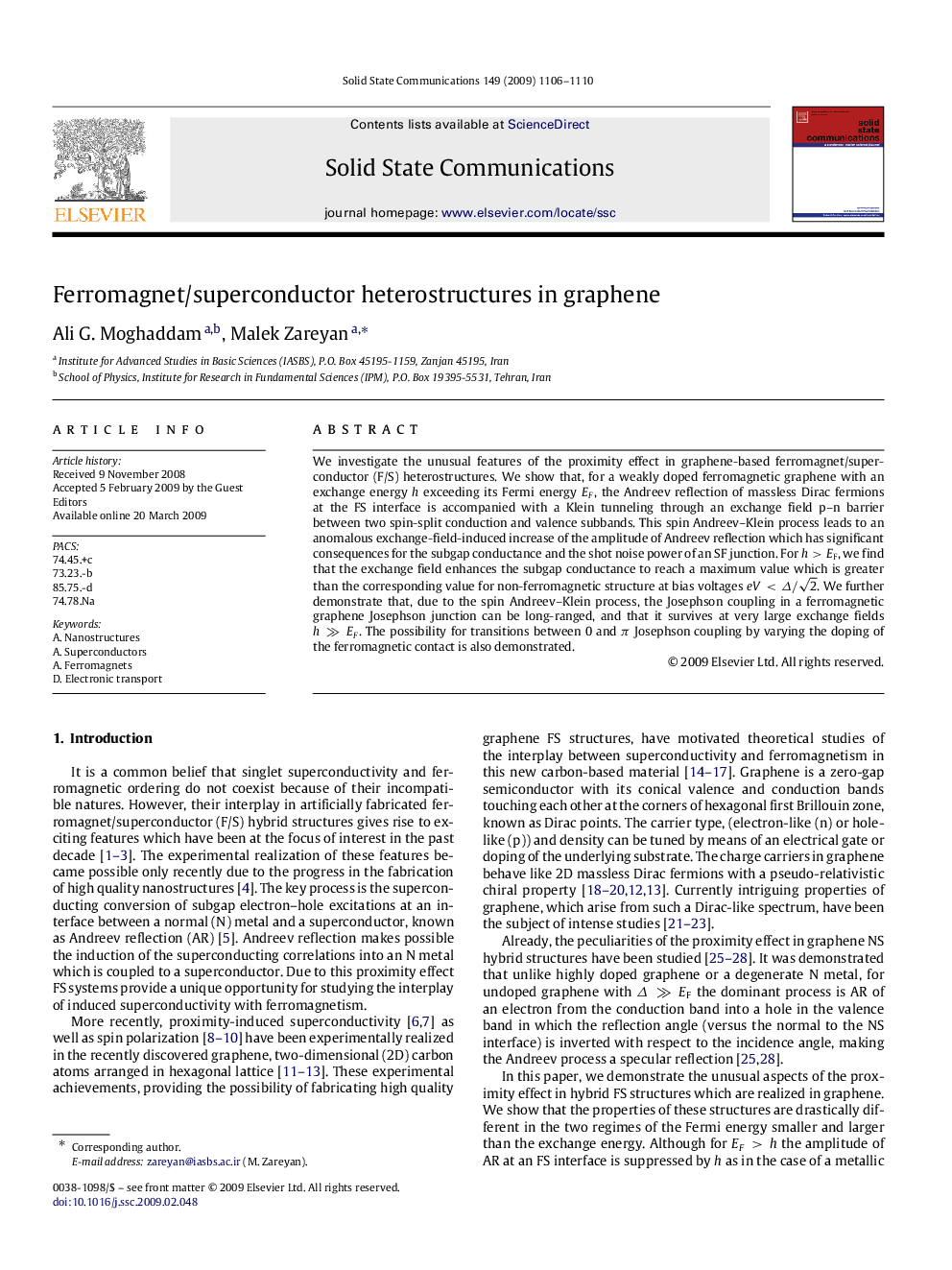| Article ID | Journal | Published Year | Pages | File Type |
|---|---|---|---|---|
| 1593803 | Solid State Communications | 2009 | 5 Pages |
We investigate the unusual features of the proximity effect in graphene-based ferromagnet/super-conductor (F/S) heterostructures. We show that, for a weakly doped ferromagnetic graphene with an exchange energy hh exceeding its Fermi energy EFEF, the Andreev reflection of massless Dirac fermions at the FS interface is accompanied with a Klein tunneling through an exchange field p–n barrier between two spin-split conduction and valence subbands. This spin Andreev–Klein process leads to an anomalous exchange-field-induced increase of the amplitude of Andreev reflection which has significant consequences for the subgap conductance and the shot noise power of an SF junction. For h>EF, we find that the exchange field enhances the subgap conductance to reach a maximum value which is greater than the corresponding value for non-ferromagnetic structure at bias voltages eV<Δ/2. We further demonstrate that, due to the spin Andreev–Klein process, the Josephson coupling in a ferromagnetic graphene Josephson junction can be long-ranged, and that it survives at very large exchange fields h≫EFh≫EF. The possibility for transitions between 0 and ππ Josephson coupling by varying the doping of the ferromagnetic contact is also demonstrated.
